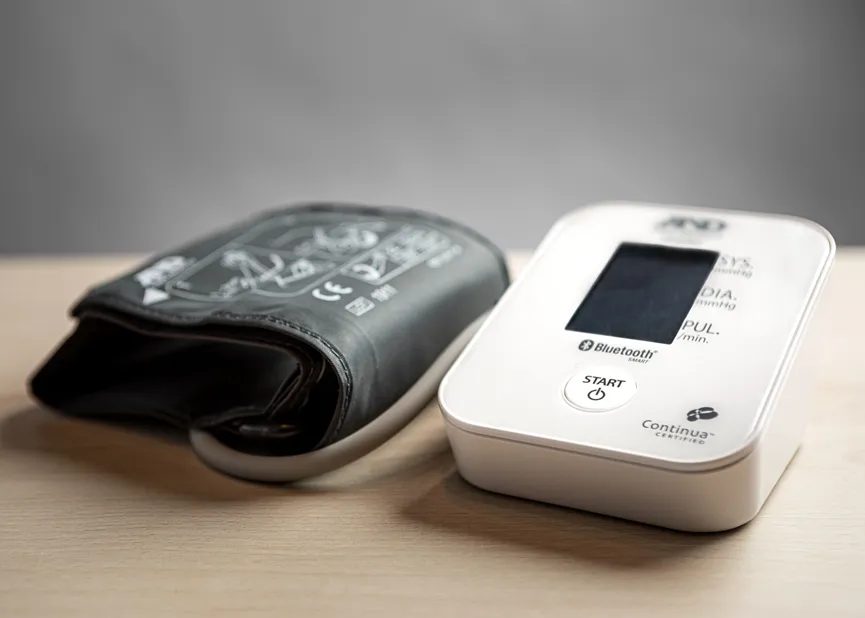High blood pressure (hypertension)
When the blood is pumped from the heart out into the body, what is called blood pressure occurs. Low blood pressure is usually harmless and does not require any treatment, but when blood pressure is high, it becomes harder for the heart to pump. Elevated blood pressure is not a disease, but a condition that entails an increased risk of, among other things, stroke, heart attack, heart failure, kidney disease, type 2 diabetes, dementia and reduced blood circulation in the legs.
Blood pressure is measured in millimeters of mercury, mmHg. The first number shows the overpressure and the second number shows the underpressure. The overpressure, also called the systolic pressure, is the pressure when the heart contracts to pump blood out to the arteries. The underpressure, also called the diastolic pressure, is when the heart expands, they mean the pressure in the arteries when the heart is "at rest" between heartbeats. The blood pressure of an adult, healthy person should be below 140/90 mmHg on average if measured in a healthcare setting and below 135/85 mmHg if measured at home, but approximately one third of the adult population has elevated blood pressure above this level.
Symptoms
Many people with high blood pressure do not feel any symptoms, so the only way to know for sure if the blood pressure is too high is to measure it.
Reason
There are several causes of high blood pressure, for example obesity, stress, alcohol, genes, kidney disease, pregnancy complications or side effects of medicines, for example birth control pills. Blood pressure, and mainly hypertension, also increases with age.
Treatment
Changing your lifestyle can lower high blood pressure and thus reduce the risk of cardiovascular disease. Examples of what you can do to lower blood pressure: drink less alcohol, lose weight if you are overweight, exercise regularly, stress less, stop smoking, eat a varied diet with lots of fruit and vegetables, eat less salt, avoid licorice.
Sometimes it is not enough to change your lifestyle to lower your blood pressure and then drug treatment may be needed. The aim of the treatment is to reduce the risk of stroke, heart attack, heart failure and kidney disease. Two or more drugs are usually needed to lower blood pressure sufficiently.
Source: 1177
Remote patient monitoring for hypertension
Remote patient monitoring is a good tool for high blood pressure because you can measure your blood pressure regularly wherever and whenever it suits you in a calm and safe environment. In addition, it helps detect and correct high blood pressure values in time, which reduces the risk of complications such as heart attacks and strokes.
You get access to a Bluetooth-connected blood pressure monitor that you pair with a mobile app. When you measure your blood pressure, the values are automatically entered into the app. There you can follow how the blood pressure has changed over time through graphs and tables. If your blood pressure is abnormal, i.e. too high or low in relation to set limit values, your caregiver will receive a notification about this and can contact you for possible measures.

